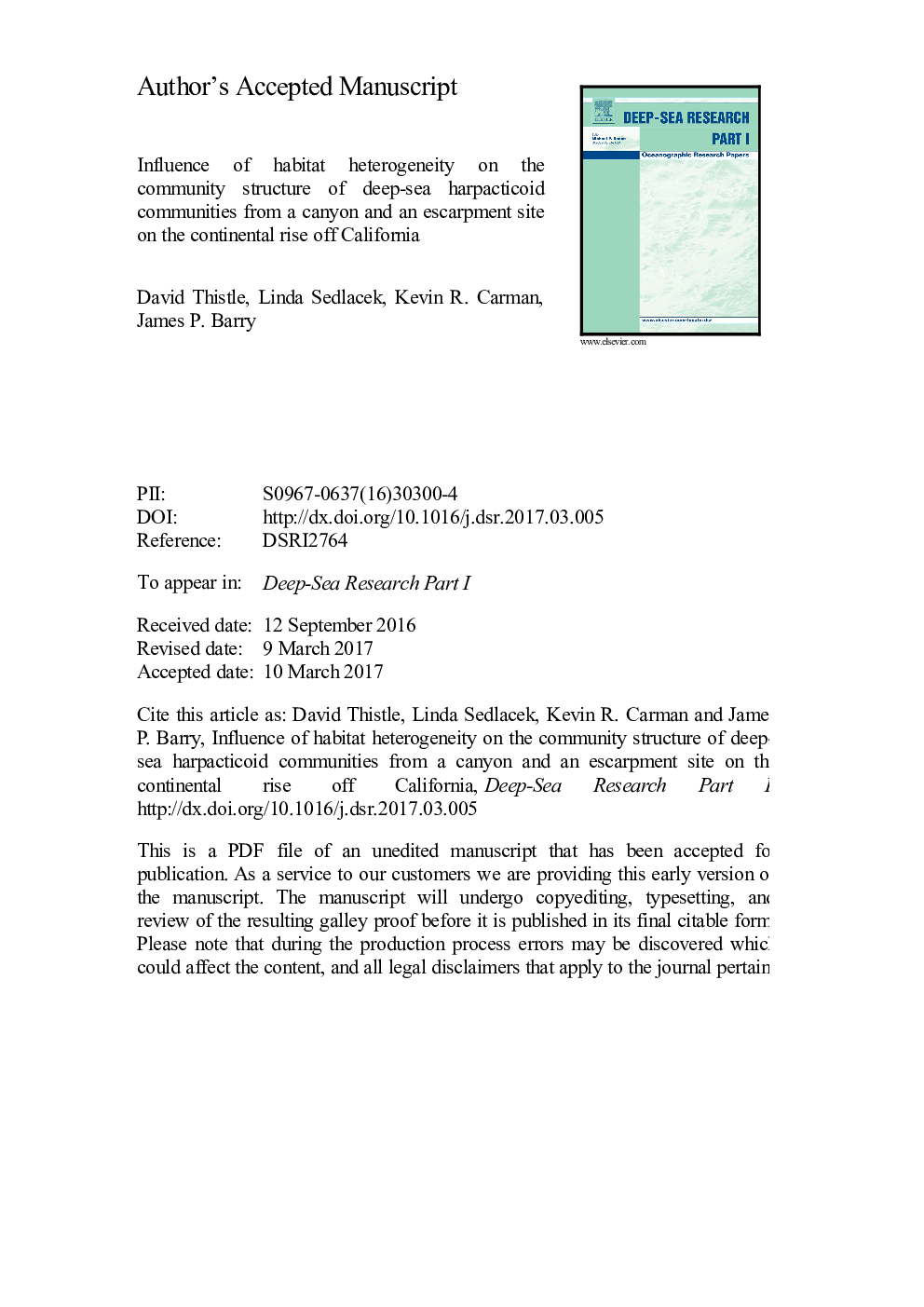| Article ID | Journal | Published Year | Pages | File Type |
|---|---|---|---|---|
| 5764726 | Deep Sea Research Part I: Oceanographic Research Papers | 2017 | 36 Pages |
Abstract
The sediment-covered deep-sea floor was initially thought to be environmentally homogeneous. Recent work has shown otherwise, and deep-sea ecologists have been searching for ecologically important environmental heterogeneities on different spatial and temporal scales, with particular interest in canyons. Here we report results for harpacticoid copepods from a site at 3262Â m depth in the axis of Monterey Canyon and one on an escarpment 46Â km away at 3090Â m depth. Multivariate community analyses revealed significant differences between sites in community structure. Absolute abundance, the ratio of subadult copepodites to adults, species density, the proportion of the harpacticoid individuals that emerged, and the proportion that lived in tubes were significantly lower at the canyon site than at the escarpment site. The proportion of the harpacticoid individuals that belonged to the surface-dweller life-style group was significantly higher than at the escarpment site. These marked differences imply that ecologically important environmental heterogeneities exist. We speculate that differences between the sites in food conditions and sediment grain-size distributions are among them.
Keywords
Related Topics
Physical Sciences and Engineering
Earth and Planetary Sciences
Geology
Authors
David Thistle, Linda Sedlacek, Kevin R. Carman, James P. Barry,
